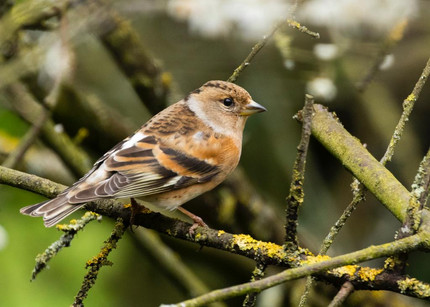What to look out for in November
- Toby Carter
- Nov 4, 2021
- 2 min read
It has been a mild so far this autumn, due to constant westerlies throughout October which has brought some rare American vagrants to make landfall in the UK (Varied Thrush on Orkney being the major headline). But due to these winds it has meant more of our typical autumn/winter migrants haven’t arrived in the masses we’re used to with the main species being the Fieldfare.
The Fieldfare is a Thrush species similar in size and bulk to that of our resident Mistle Thrush, these two species are quite often seen fighting for the territory of the best apple or rowan trees in harsher conditions. Their “schack-schack” call is very helpful in locating this species with like their small cousins the Redwing, are highly social birds and can form large flocks moving between rowan trees and with their slate grey head they’re also very charismatic and obvious to pick out when on the ground. Not only has the climate in the UK been this mild but it is a similar case over in Scandinavia where most of our winter migrants breed in the summer months, so therefore it hasn’t been cold enough to push Fieldfares over in our direction. Compared once again to the Redwing, the Fieldfare is a much larger, hardier species which is part of the reason they haven’t yet migrated. The graph below taken from Birdtrack shows how Fieldfares haven’t arrived compared to previous years.


Comparison between Redwing (above) & Fieldfare (below) taken by Cameron Sharp
On the other hand, species such as Brambling and Redwing have still arrived despite crossing the North Sea battling against strong SW winds.
Redwing numbers are on-par with previous years but Brambling’s seem to be having an excellent autumn, which could be due to a good breeding season in Scandinavia and now this influx is being seen here in the UK. On the 18th October at Holy Island recorded 955 flying over in 5hrs and similar numbers seen in Norfolk (851 on 16th Oct) and Spurn, East Yorkshire (784 on 12th Oct).
But this doesn’t compete with the numbers seen on the continent where numbers more than 15,000+ have been counted in France and the Netherlands in a single day!
This influx can be seen from the Birdtrack graph below, and who knows if we have some ideal, easterly winds we could seen even more hit our coastline and filter inland. Get checking those Chaffinch flocks for a slightly “orange-er” looking bird, also their call is obvious once you recognise it with the tell-tale croaking “te-ehp” when in flight.










Comments